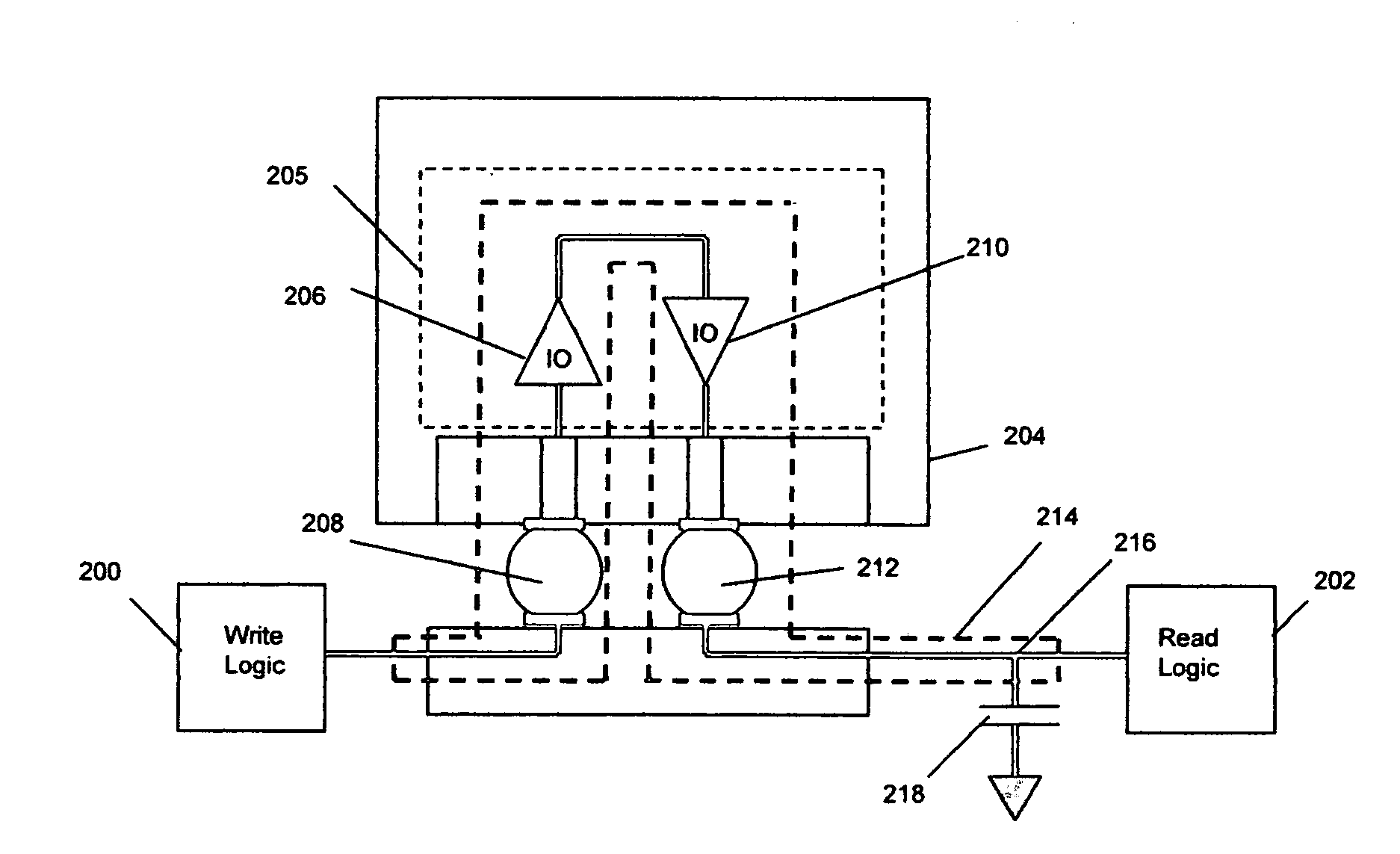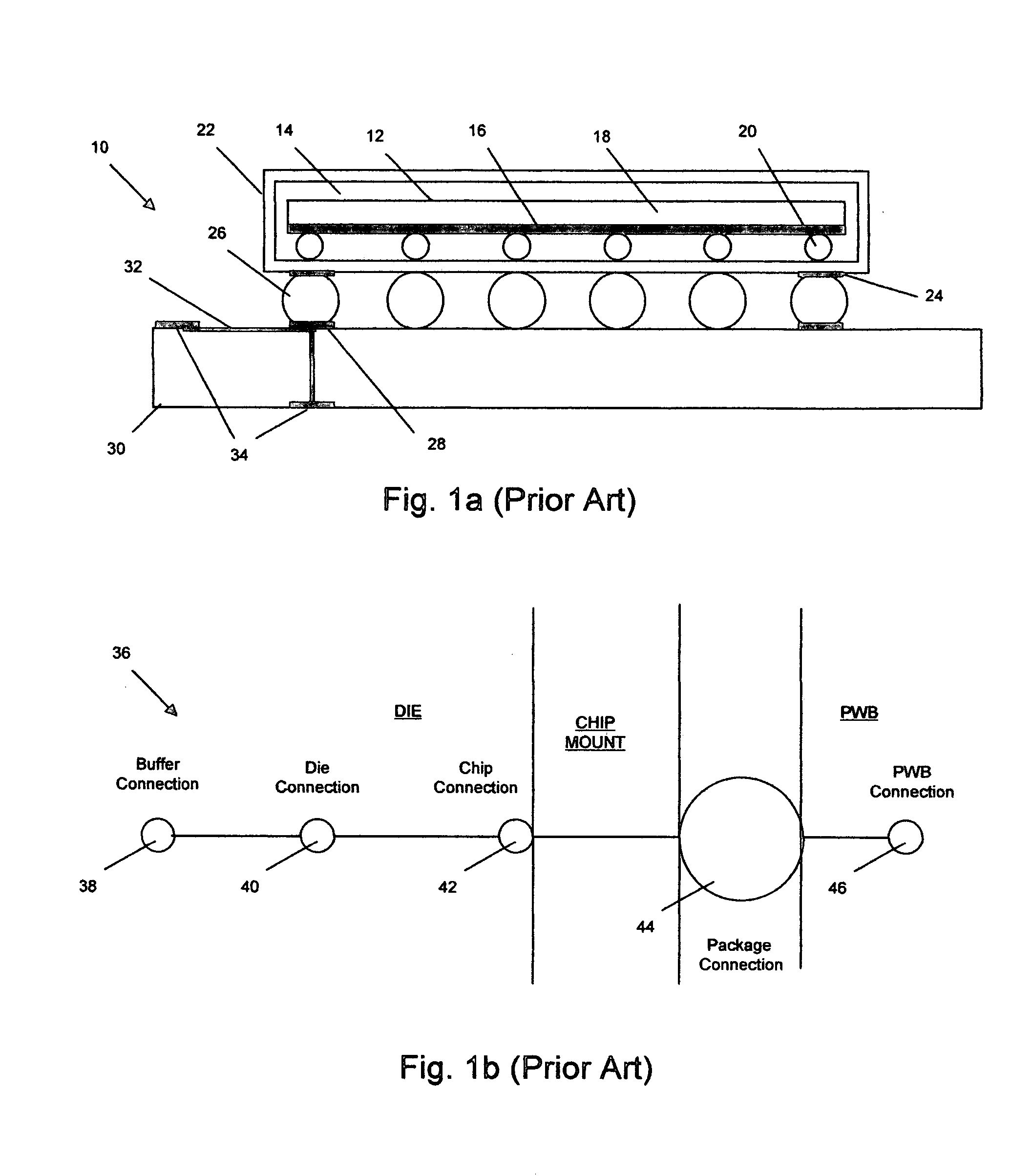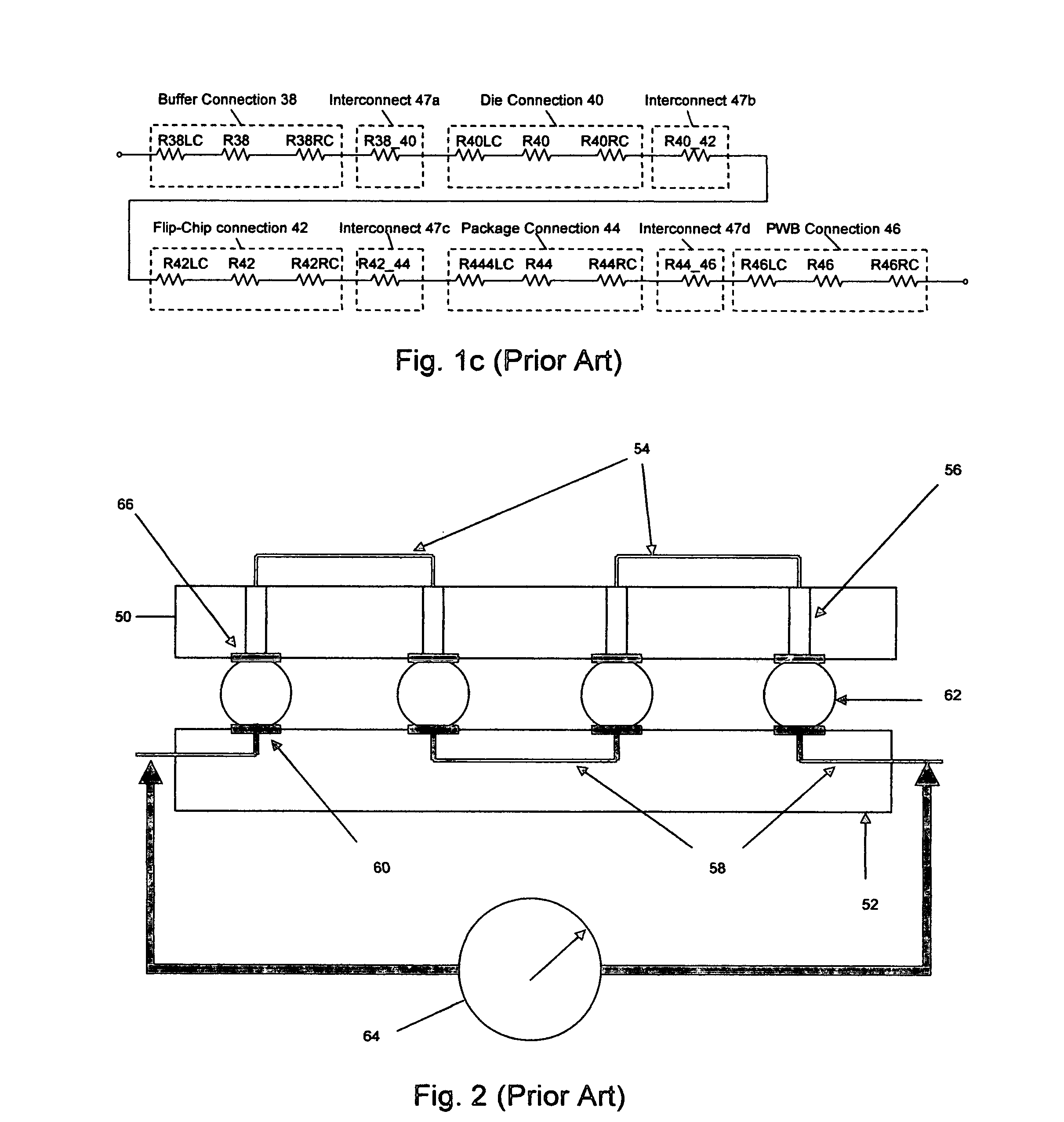Method and circuit for the detection of solder-joint failures in a digital electronic package
a digital electronic package and solder joint technology, applied in the direction of individual semiconductor device testing, semiconductor/solid-state device testing/measurement, instruments, etc., can solve the problems of reduced reliability, solder-joint connection from digital electronic package such as fpgas or microcontroller to printed wire board (pwb) is a major reliability problem, and reduces reliability. , the effect of manufacturing defects and electronic package operation
- Summary
- Abstract
- Description
- Claims
- Application Information
AI Technical Summary
Benefits of technology
Problems solved by technology
Method used
Image
Examples
Embodiment Construction
[0053] The present invention provides a method for evaluating solder-joint integrity of operational digital electronic packages, such as FPGAs or Microcontrollers that have internally connected input / output (I / O) buffers and high density ball grid array packages, and particularly for evaluating the integrity of the solder-joint network during normal operation of the digital electronic packages. The invention will be described for a FPGA including a flip-chip mounted in a BGA package that is reflow soldered to a PWB, but it will be understood that the method and circuit for evaluating solder-joint integrity is generally applicable to any digital electronic package that has internally connected input / output buffers in the solder-joint network regardless of whether the die is configured as an FPGA, microcontroller or otherwise, or whether a specific mount method, such as a flip-chip is used, or whether a specific bonding method, such as wire bonding is used, or regardless of a specific...
PUM
 Login to View More
Login to View More Abstract
Description
Claims
Application Information
 Login to View More
Login to View More - R&D
- Intellectual Property
- Life Sciences
- Materials
- Tech Scout
- Unparalleled Data Quality
- Higher Quality Content
- 60% Fewer Hallucinations
Browse by: Latest US Patents, China's latest patents, Technical Efficacy Thesaurus, Application Domain, Technology Topic, Popular Technical Reports.
© 2025 PatSnap. All rights reserved.Legal|Privacy policy|Modern Slavery Act Transparency Statement|Sitemap|About US| Contact US: help@patsnap.com



